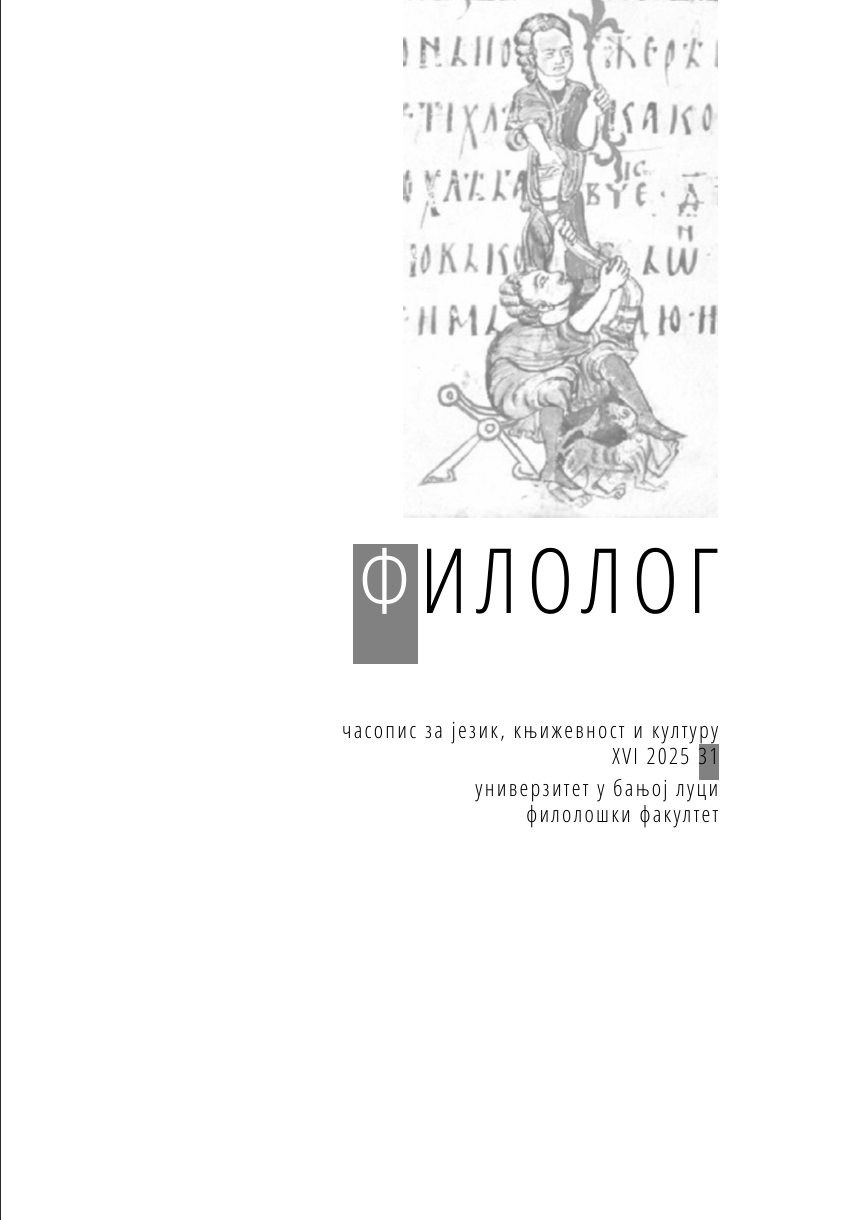INSULARITY, PLANT AND ANIMAL WORLD IN THE NOVELS OF LORENZA PIERI AND LORA TOMAŠ
DOI:
https://doi.org/10.21618/fil2531441mKeywords:
insular topos, insularity, plant world, animal world, interdependence, anthropocentrism, dystopian worldAbstract
Insularity in the novels Isole minori by Lorenza Pieri and Slani mrak by Lora Tomaš is represented as a 'fluid' concept, closely connected with historical, political and social changes. Insularity is also characterised by the ambivalence of its residents: on the one hand, they feel the civil responsibility for peaceful coexistence, on the other, they lack empathy. In this ambivalence, nature plays a decisive role: flora and fauna are foods, but they are also inseparable elements of the island environment, which spur, influence, and determine the actions of the characters. The objective of this paper is to analyse the role of the plant and animal world in the two novels, starting from the specificities of the island environment. By the means of the results of the analysis, it will be demonstrated that the world of plants and animals has the function of establishing and maintaining relationships among characters and between characters and the island environment, reflecting, at the same time, the hierarchical relationships between human beings and flora and fauna. Through the analysis, the results will highlight an anthropocentric vision in these novels, which anticipates a future dystopia. Furthermore, the results of the analysis will highlight the correlation between the world of plants and animals with that of characters, together with the hierarchies present in the contemporary era. The analysis is performed using, as a methodology, the interpretation of the symbols proposed by Mircea Eliade, in such a way as to identify the importance of mutual correspondence between the animal, plant, and character worlds.
References
Božanić, J. (2007) Poetika smijeha u facendama otoka Visa, Čakavska rič, XXXV, 2, 339–348.
Buell, L. (2013) La critica letteraria diventa eco. Salabè, C. (a cura di). La letteratura e la crisi del pianeta. Roma, Donzelli, 3–15.
Eliade, M. & Couliano, I. P. (a cura di) (2020) Dizionario dei simboli, Milano, Jaca Book (edizione digitale).
Medve, Z. (2024) Otok kao topos – i malo više od toga. Nekoliko „otočnih” ulomaka o S. Novaku, D. Milošu, S. Karuzi i L. Krasznahorkaiu povodom 100. Obljetnice rođenja Slobodana Novaka, Croatica, XLVIII (2024) 68, 167–178.
Mihaljević, N. (2023) Sicilija u vremenu i prostoru: migracija, ekoodrživost, gradski ambijent i otuđenje u zbirci pripovijedaka Sicilia d'autore, Mogućnosti: književnost, umjetnost, kulturni problemi, LXVIII, 1–2; 1–16.
Mihaljević, N. (2025) La donna, il corpo vs. l'isola. Galinanes Gallen, M., Salis, L., Cattani, A. (a cura di). Il corpo che abito. Visioni e riflessioni nella letteratura e dintorni. Madrid, Dykinson, S. L., 346–360.
Novak, S. (2010) Introspektivno zrcalo. Jadranski arhipelag priča priče (ur. M. Tepšić). Zagreb, Algoritam, 27–29.
Pieri, L. (2023) Isole minori. Roma, Edizioni e/o.
Prosenc, I. (2017) Ai margini della città: le donne e la periferia nei racconti di Valeria Parrella. Burguillos Capel, M. (a cura di). Escritoras periféricas y adaptaciones de textos, Sevilla, Benilde, 168–177.
Prosenc, I. (2018) «C’era la città, tutta intera, tutta»: Napoli nella narrativa di Valeria Parrella. Jurišić, S., Marić, A., Mihaljević, N., Dalmatin, K. (a cura di). La città italiana come spazio letterario nel contesto mediterraneo (1990-2015). Firenze, Franco Cesati, 87–95.
Tomaš, L. (2020) Slani mrak. Zagreb, Hena com.
Downloads
Published
How to Cite
Issue
Section
License

This work is licensed under a Creative Commons Attribution-NonCommercial-NoDerivatives 4.0 International License.








